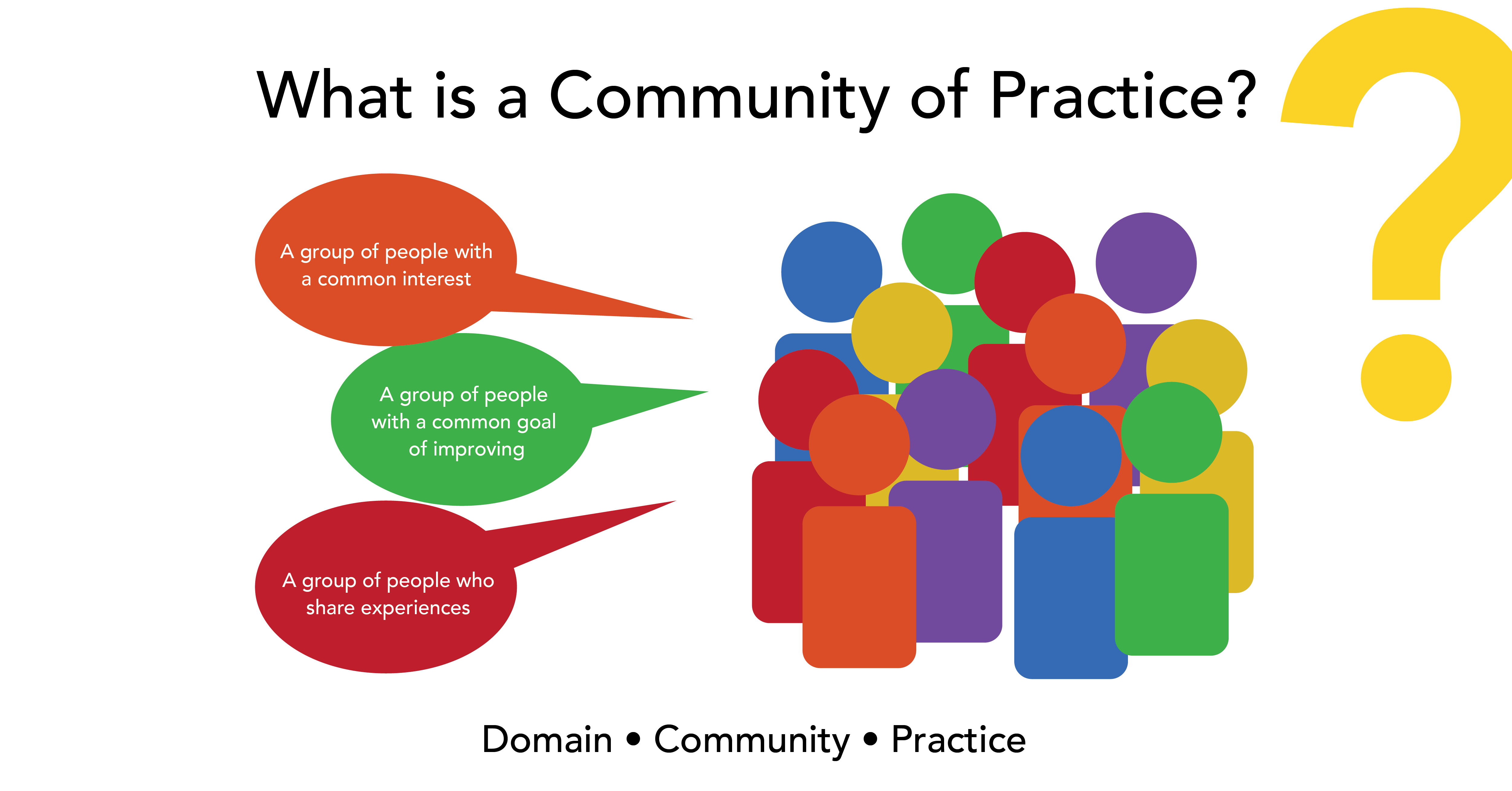Communities of Practice (CoP) are popping up everywhere in my agency. What seemed to me to be a novel approach to learning, sharing and leading, I have discovered is an aged old phenomenon that stems from learning theory. Cognitive anthropologists Jean Lave and Etienne Wenger coined the term “community of practice” when studying apprenticeships as a learning model — the term referred to the community that acts as a living curriculum. According to “An Introduction to Communities of Practice: A Brief Overview of the Concept and its Uses” (2015), the use of this practice can be found in nearly all sectors of industry in both the private and public sectors, and in a variety of focus areas, e.g., IT, education, communication, and the list goes on.

The idea of forming a CoP is to engage a group of people who share a passion for something and want to grow in community to do it better. It is a dynamic enterprise to enhance learning, idea sharing, problem solving, and support. CoPs call for regular interaction as participants learn from each other. Take for instance a group of health informaticists who want to work in community as a way to improve the provider experience or human resources managers who want to better their recruitment and retention strategies. Be aware, however, that something called a community is not in and of itself a community of practice. There are three key elements that must be in place to qualify as a CoP according to the website Creating Communities of Practice:
- Domain: Community members have a shared domain of interest, competence and commitment that distinguishes them from others. This shared domain creates common ground, inspires members to participate, guides their learning and gives meaning to their actions.
- Community: Members pursue this interest through joint activities, discussions, problem-solving opportunities, information sharing and relationship building. The notion of a community creates the social fabric for enabling collective learning. A strong community fosters interaction and encourages a willingness to share ideas.
- Practice: Community members are actual practitioners in this domain of interest and build a shared repertoire of resources and ideas that they take back to their practice. While the domain provides the general area of interest for the community, the practice is the specific focus around which the community develops, shares and maintains its core of collective knowledge.
CoP members have the common belief that “none of us is as good as all of us.” Inherent in the term is a shared view that their collective competence is of highest value, even if others outside of their community do not recognize their expertise. The workings of a CoP include a variety of characteristics such as:
- Enabling practitioners to take collective responsibility for managing the knowledge they need to grow and learn
- Creating a direct link between learning and performance
- Addressing the dynamic aspects of knowledge creation and sharing, as well as the more explicit aspects
- Encouraging connections among people across organizational and geographic boundaries
So, what elements might one consider when developing a CoP? Here are some starting points:
- There must be a strategic plan to put a CoP in place.
- There should be a leader or coordinator to get things started and keep the CoP organized.
- The practice can be formal or informal. The key ingredient is the intentionality.
- The CoP must be open to learning, innovating and problem-solving to develop a collective and strategic voice.
- The CoP can both create and measure value to the organization.
- CoPs should be safe spaces and welcome diverse ideas to avoid groupthink.
- CoPs may function online, but members should not rely on the technology alone to advance the practice.
- CoPs are not substitutes for workgroups, teams or networks. However, they are part of the learning ecology of the group.
CoP in Action
Let’s take health care and the pandemic. Establishing a virtual CoP, or CoPv, during the pandemic was beneficial to health care teams. A CoPv during COVID-19 was undeniably beneficial as a process to restore moral integrity and build collective moral resilience by:
- Reducing hierarchical barriers and sharing information.
- Learning from each other and developing trust.
- Sharing ideas on how to treat patients.
To learn more about Communities of Practice from the theorists who coined the term, go this website. For an idea on how to create a Community of Practice, you may find this site helpful. The CDC also has a good resource for Communities of Practice (CoPs) and resources to get started.
References:
Delgado J, Siow S, de Groot J, et al. J Med Ethics 2021;47:374–382.
Wenger-Trayner, E. and Wenger-Trayner, B. (2015). An introduction to communities of practice: a brief overview of the concept and its uses. Available from authors at https://wenger-trayner.com/introduction-to-communities-of-practice.
Stacie M. Rivera, PhD, MPH, APR, has more than 25 years’ experience in communications, public affairs, and public policy and administration. She is a public affairs specialist for the Department of Veterans Affairs (VA). Dr. Rivera has participated in the design and implementation of local and national communications campaigns that advance national health care initiatives for a variety of agencies including VA, the Department of Defense, and the Department of Health and Human Services. She is an instructor with the West Virginia University College of Media Online Programs and with the School of Communication & Design, Loyola University New Orleans.





Leave a Reply
You must be logged in to post a comment.